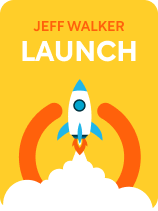

This article is an excerpt from the Shortform book guide to "Launch" by Jeff Walker. Shortform has the world's best summaries and analyses of books you should be reading.
Like this article? Sign up for a free trial here.
What do your prospective customers need to hear before you launch your product? What questions do you need to answer for them?
You can attract interested buyers with little more than an email list. In Launch, Jeff Walker shares his five-stage strategy to launch a product successfully. Stage three is about building anticipation for your launch, and it hinges on what you communicate to your contacts.
Continue reading to learn about Walker’s product launch communication plan.
Product Launch Communication Plan
After you’ve introduced your followers to your offer, Walker recommends sending three pieces of marketing content to your email list to build anticipation for your product and convince them to buy. By releasing a series of content, you’re communicating with your target audience more than with a single letter. This product launch communication plan generates excitement and a narrative that keeps your audience engaged.
Walker suggests you space these marketing pieces over the course of five to twelve days. The content format doesn’t matter so long as it’s high-quality.
In your three marketing pieces, Walker recommends you give your target market the answers to three questions: Why they should buy your product, what your product is, and how it will benefit them.
Message #1: The Reason—“Why”
In your first piece, capture your follower’s attention and give them a reason to care about your product.
The first “Why” question you need to answer is “Why should I care?” Walker suggests promoting your product as an opportunity for change or betterment. For example, if your product is a series of virtual tutorials on how to longboard dance, focus on how your tips and tricks will transform people into stylish skaters within a short period of time.
(Shortform note: In The Personal MBA, Josh Kaufman agrees with Walker’s claim that people are interested in products that provide change or growth. However, he adds that there are four additional needs people try to meet when making purchases: to feel safe, minimize effort, connect with others, and feel good about themselves. To show why customers should care about your product, consider being more specific by highlighting these other needs. For example, your longboard lessons could satisfy someone’s need for social belonging and improve self-esteem.)
The second “Why” question is “Why should I listen to you?” As Walker points out, people tend to listen to those with authority—people are more likely to sign up for a workshop run by an experienced professional rather than a beginner. With the longboarding example, you’d want to share how you’d been skating for over 15 years and how you’d won several longboard dancing competitions.
(Shortform note: When showcasing your authority to potential customers, be careful not to distance yourself from them too much in status, so that they find it hard to relate to you. To increase relatability, experts suggest you lean into emotion and tell a narrative—share your flaws and the challenges you’ve overcome, especially those that your audience may be facing. When your prospects feel like you share their experiences, they’re more likely to listen to you and think that your product is relevant to them.)
Walker recommends you not only reveal your new product but also share part of the content for free. To continue the example, you could provide a free tutorial on how to do one longboard dance trick, giving something of value upfront. Finally, hint at what’s coming up (the next content piece) and encourage engagement by asking for feedback and comments.
(Shortform note: When you ask for feedback and comments at the end of your message, you’re making a call to action. In other words, you’re specifying an action you want your audience to take. According to Donald Miller in Building a StoryBrand, having a call to action like Walker suggests is crucial because people don’t usually act without being prompted to. By asking for feedback, you’re encouraging readers to do more than passively glance at your message, but to get actively involved in your product launch process.)
Message #2: The Product—“What”
For your second content piece, Walker says you should focus on giving your prospects an idea of what they will learn or achieve if they purchase your product. To do this, summarize what you’re offering, address any concerns, and finally, offer another piece of your product for free (such as a more in-depth tutorial of another longboard trick). Lastly, end by hinting at the third piece and ask for more feedback.
(Shortform note: Research supports Walker’s tactic of offering a free sample, finding that 65% of customers who try free samples purchase the product. By providing something free and of value, you lower the risk that a customer faces when purchasing a new product. This reassurance can convert hesitant prospects into buyers.)
Message #3: The Benefit—“How”
In this final piece, Walker advises you to showcase how people can experience the benefits for themselves and visualize their own transformation. Try to draw a link between your prospect’s goals and your offer. He suggests offering a case study to convince people that the product will work for them. For example, you could spotlight before-and-after videos of a beginner longboarder you’d taught before. Then, answer any major questions you’ve received from your feedback requests.
After that, transition into discussing your offer and the logistics of how your followers can finally attain your product (and its benefits) for themselves.
(Shortform note: Experts agree with Walker’s approach of helping people feel like your product will work for them personally. They encourage you to cultivate psychological ownership, which allows customers to feel like the product is an extension of their identity. They offer three suggestions on how you can do this: increase customer control by involving them in the process, make your product customizable, and make your product feel exclusive.)
Exercise: Build Anticipation With Three Content Pieces
According to Walker, building anticipation is a crucial part of launching a product. We’ve learned how three pieces of marketing content can be more powerful than one. For this exercise, think about a product or a service you might be interested in selling and practice planning out your three content pieces.
- Describe a product or service you’re interested in offering. Is it a physical product or are you offering a service?
- For your first piece: Why should people buy your product or service—what change or transformation are you offering? (For example, if you’re offering vegetable gardening classes, you’ll be helping people become healthier eaters and transform their backyard into a beautiful space.)
- What makes you an authority in providing your product? (You might have a degree in horticulture or run a successful community garden.)
- For your second piece: What value can you offer your customers? (For example, you could give a quick tutorial with expert advice on how to plant tomatoes.)
- For your third piece: How will your product help your customers meet their goals? In what ways can you showcase that? (For example, provide a video tour of a successful garden that someone started from scratch by following your tutorials.)

———End of Preview———
Like what you just read? Read the rest of the world's best book summary and analysis of Jeff Walker's "Launch" at Shortform.
Here's what you'll find in our full Launch summary:
- How to stand out in an age when anyone can start a business online
- How you can market and sell a product with little to no start-up costs
- Why you should start an email list before you even launch your product






